Depletion of a polo-like kinase in Candida albicans activates cyclase-dependent hyphal-like growth
- PMID: 12802083
- PMCID: PMC165105
- DOI: 10.1091/mbc.02-05-0076
Depletion of a polo-like kinase in Candida albicans activates cyclase-dependent hyphal-like growth
Abstract
Morphogenesis in the fungal pathogen Candida albicans is an important virulence-determining factor, as a dimorphic switch between yeast and hyphal growth forms can increase pathogenesis. We identified CaCDC5, a cell cycle regulatory polo-like kinase (PLK) in C. albicans and demonstrate that shutting off its expression induced cell cycle defects and dramatic changes in morphology. Cells lacking CaCdc5p were blocked early in nuclear division with very short spindles and unseparated chromatin. GFP-tagged CaCdc5p localized to unseparated spindle pole bodies, the spindle, and chromatin, consistent with a role in spindle elongation at an earlier point in the cell cycle than that described for the homologue Cdc5p in yeast. Strikingly, the cell cycle defects were accompanied by the formation of hyphal-like filaments under yeast growth conditions. Filament growth was determinate, as the filaments started to die after 24 h. The filaments resembled serum-induced hyphae with respect to morphology, organization of cytoplasmic microtubules, localization of nuclei, and expression of hyphal-specific components. Filament formation required CaCDC35, but not EFG1 or CPH1. Similar defects in spindle elongation and a corresponding induction of filaments occurred when yeast cells were exposed to hydroxyurea. Because CaCdc5p does not appear to act as a direct repressor of hyphal growth, the data suggest that a target of CaCdc5p function is associated with hyphal-like development. Thus, an internal, cell cycle-related cue can activate hyphal regulatory networks in Candida.
Figures
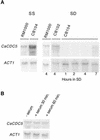
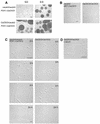
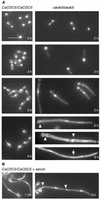
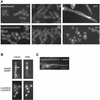
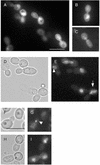
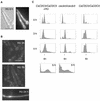
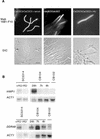
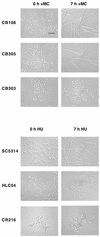
References
-
- Alexandru, G., Uhlmann, F., Mechtler, K., Poupart, M., and Nasmyth, K. (2001). Phosphorylation of the cohesin subunit Scc1 by Polo/Cdc5 kinase regulates sister chromatid separation in yeast. Cell 105, 459–472. - PubMed
-
- Backen, A.C., Broadbent, I.D., Fetherston, R.W., Rosamond, J.D.C., Schnell, N.F., and Stark, M.J.R. (2000). Evaluation of the CaMAL promotor for regulated expression of genes in Candida albicans. Yeast 16, 1121–1129. - PubMed
-
- Bai, C., Ramanan, N., Wang, Y.M., and Wang, Y. (2002). Spindle assembly checkpoint component CaMad2p is indispensable for Candida albicans survival and virulence in mice. Mol. Microbiol. 45, 31–44. - PubMed
-
- Barton, R., and Gull. K. (1988). Variation in cytoplasmic microtubule organization and spindle length between two forms of the dimorphic fungus Candida albicans. J. Cell Sci. 91, 211–220. - PubMed
Publication types
MeSH terms
Substances
LinkOut - more resources
Full Text Sources
Other Literature Sources
Molecular Biology Databases
Miscellaneous

